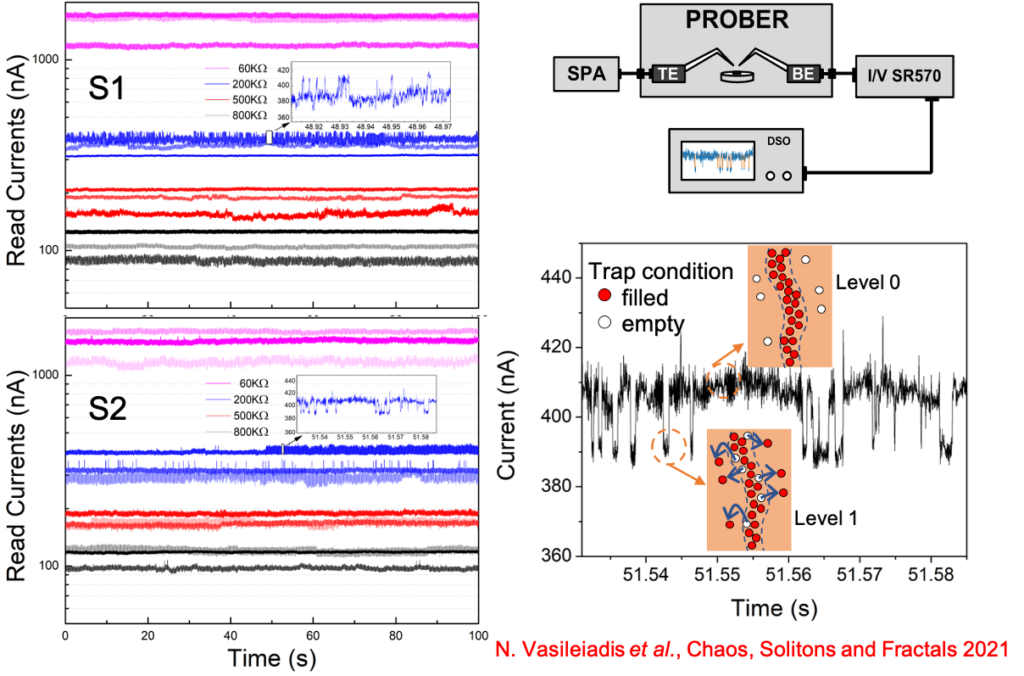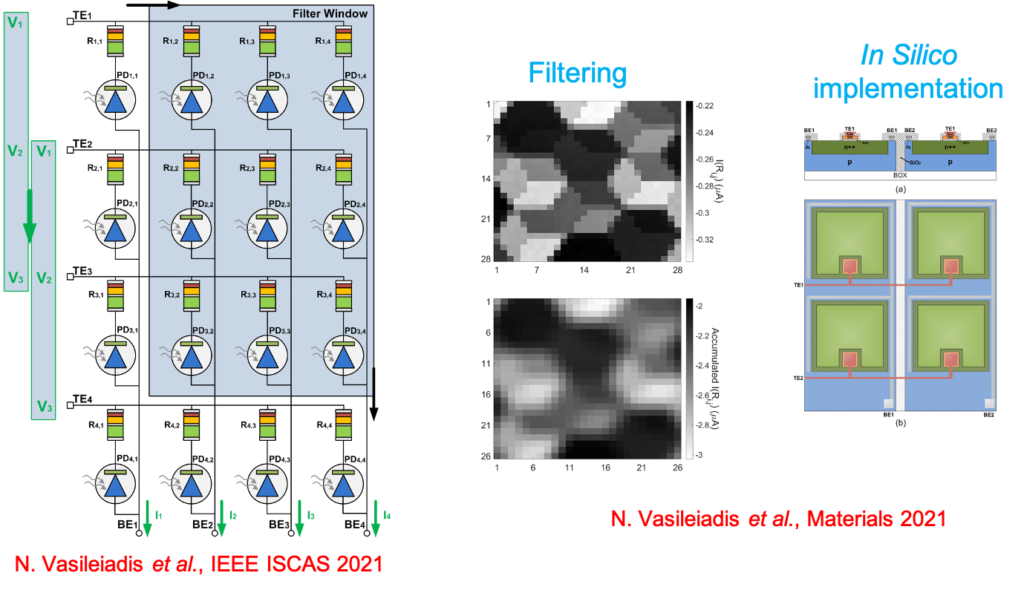Resistive memories (RRAMs) and memristive devices
(Contact person: P. Dimitrakis)
RRAMs are considered as the most promising devices for NVM and thanks to their memristive properties they are also candidates for the realization of neuromorphic circuits. We have already demonstrated MIS and MIOS memory cells with SiNx (x=1.27, almost stoichiometric) acting as resistance switching layer. Cu is used as top-electrode metal. We perform full DC and AC electrical characterization using our Tektronix 4200A SCS, NI PXI custom-built pulse characterization system and low-frequency noise/random telegraph noise measurements.


These devices exhibited excellent neuron synaptic behavior.

Targeted applications are true-random number generators for security and in-memory / neuromorphic computing.

Our current investigations focus on the modification of LPCVD silicon nitride as resistive material by (i) tuning the stoichiometry during the LPCVD process, (ii) oxygen and nitrogen doping by plasma and ion implantation, (iii) embedded nanoparticles. We fabricated RRAM single-cells based on MIS and MIOS structures on bulk Si wafers. Recently we fabricated RRAM single cells on SOI substrates. Our research on device architecture is focusing on the fabrication (i) 1R, (ii) 1D1R and (iii) 1T1R crossbar arrays on SOI.